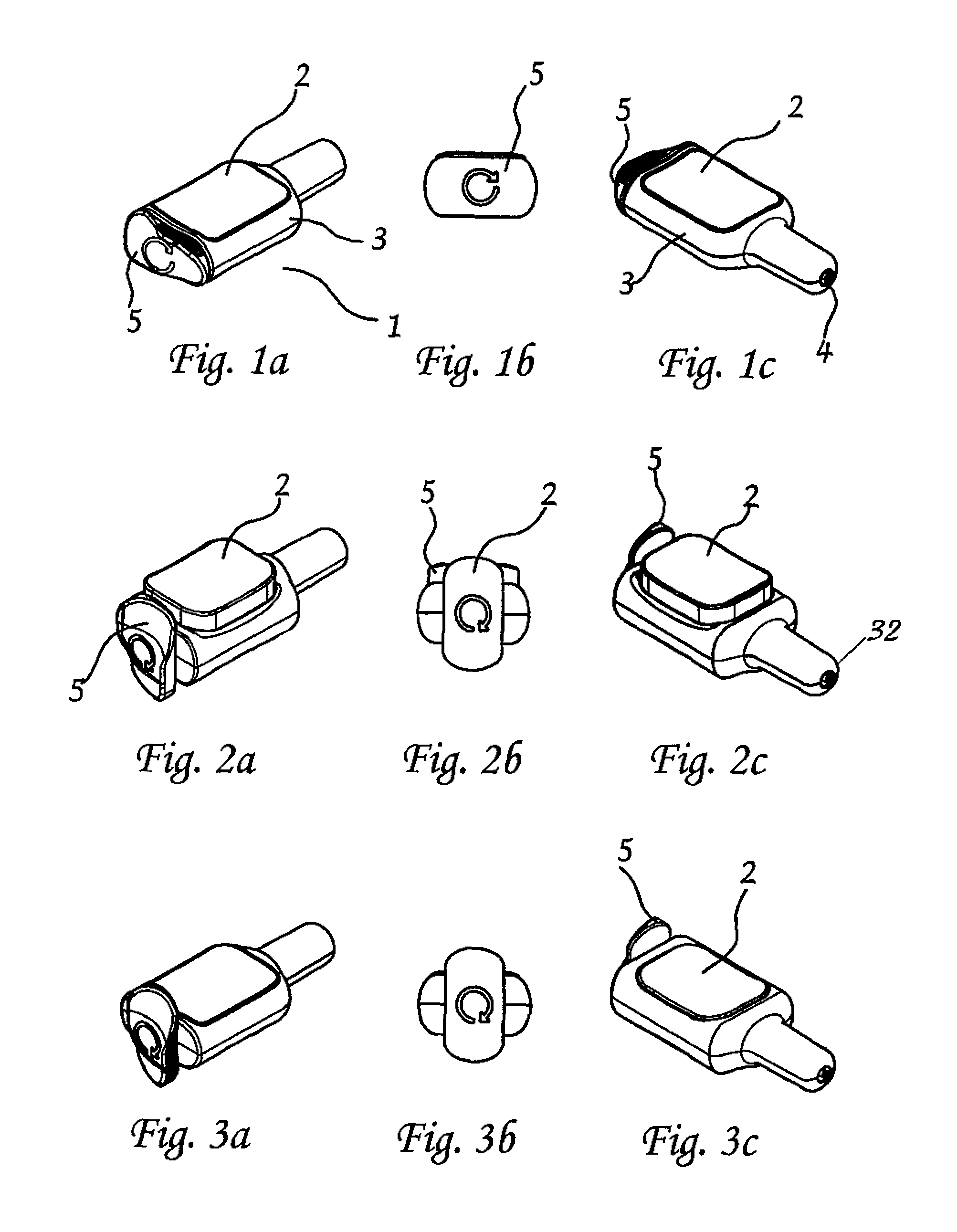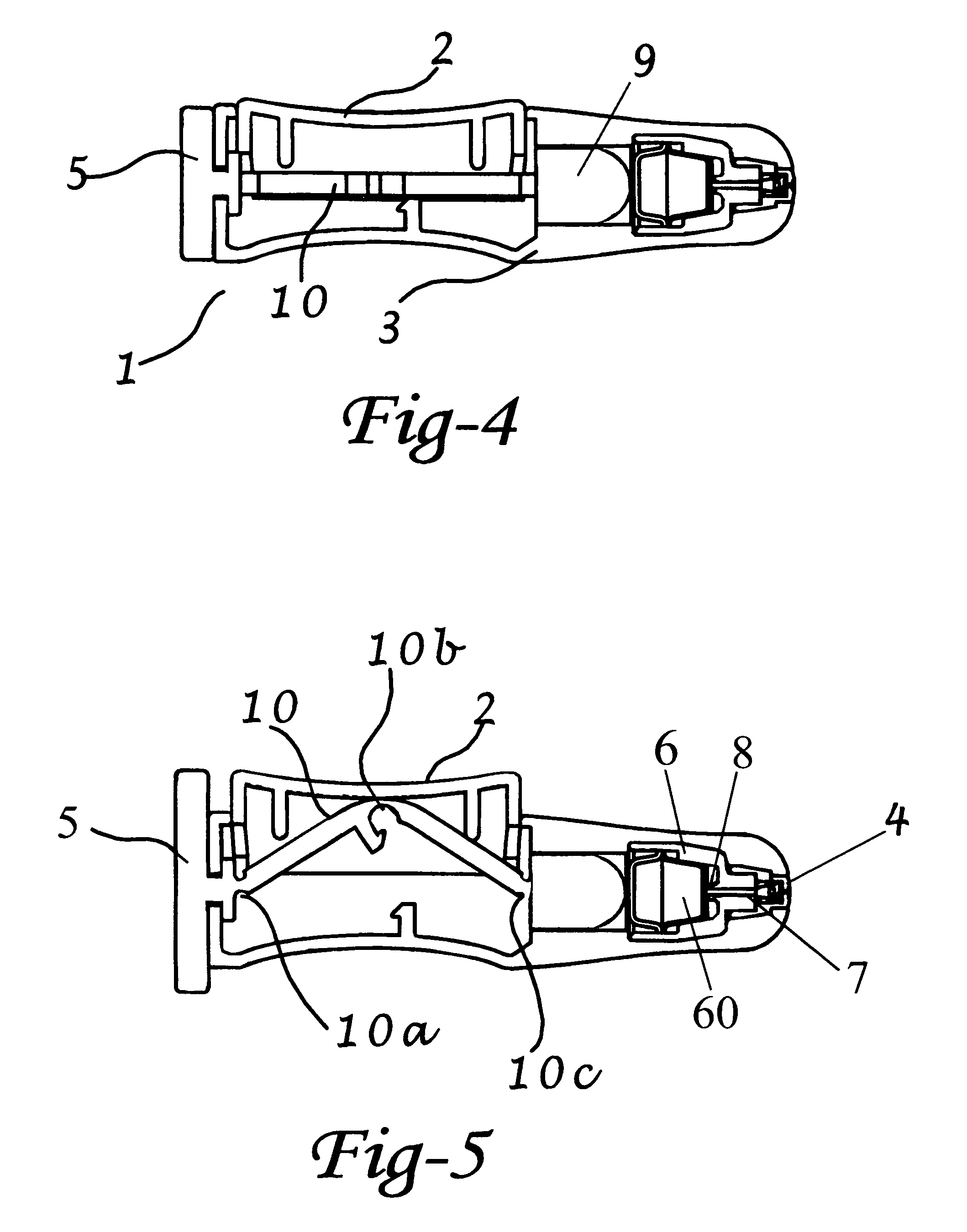Intranasal cartridge devices
a cartridge device and cartridge technology, applied in the field of intranasal cartridge devices, can solve the problems of no longer being sterile, no longer being able to administer the substance, and being prone to abus
- Summary
- Abstract
- Description
- Claims
- Application Information
AI Technical Summary
Benefits of technology
Problems solved by technology
Method used
Image
Examples
Embodiment Construction
[0111]A preferred embodiment of an intranasal delivery device is shown in storage, ready and fired configurations in FIGS. 1, 2, and 3, respectively. The device 1 as shown, is a push button version of an intranasal delivery device. This embodiment includes a button 2, a body 3 with nozzle end 32 and an activation knob 5. The device shown in FIG. 1 is in storage mode, as can be seen by the positions of the activation knob 5, which is aligned with the body 3, and the button 2, which is in the depressed position. As shown, the activation knob 5, and the body 3, have a generally ovoid cross sectional shape. As used herein, when the activation knob 5 is in the storage position, the long axis of the activation knob 5 is aligned with the long axis of the body 3 cross section. A cross section of the push button device in storage position is shown in FIG. 4. In this view, the linkage 10 is horizontal under the button 2. The plunger 9 is in the retracted mode.
[0112]The embodiment of an intran...
PUM
 Login to View More
Login to View More Abstract
Description
Claims
Application Information
 Login to View More
Login to View More - R&D
- Intellectual Property
- Life Sciences
- Materials
- Tech Scout
- Unparalleled Data Quality
- Higher Quality Content
- 60% Fewer Hallucinations
Browse by: Latest US Patents, China's latest patents, Technical Efficacy Thesaurus, Application Domain, Technology Topic, Popular Technical Reports.
© 2025 PatSnap. All rights reserved.Legal|Privacy policy|Modern Slavery Act Transparency Statement|Sitemap|About US| Contact US: help@patsnap.com



